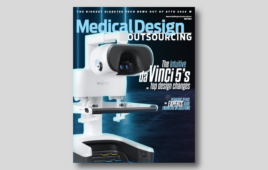
The go or no go gauge addresses this issue by dispersing pressure evenly across the Frelon bearing liner, giving a more accurate read of the internal dimensional sizes of the bearing. This form of inspection complies with many military and industry standards.
Understanding the method to properly inspect the Frelon liner in PBC Linear’s Simplicity plain bearings is essential to taking full advantage of the product. The Frelon liner supplies numerous attributes that make it preferable in many unique applications; however, being a teflon-based material requires a different method of inspection: Approved Inspection Method: Pin Gauges (AKA: Go or No-Go Gauging).
The best way to properly inspect a Simplicity plain bearing goes back to one of the earliest and perhaps simplest ways to inspect a bearing’s internal diameter for size is using a simple functional pin, or “go or no go” inspection plug gauge. Because the liner is porous and pliable, point-pressure methods of inspection can provide inaccurate inspection results. The go or no go gauge addresses this issue by dispersing pressure evenly across the Frelon bearing liner, giving a more accurate read of the internal dimensional sizes of the bearing. This form of inspection complies with many military and industry standards.
The dimensions that are used to measure Simplicity bearings are as follows:
- Go gauge: Minimum ID Size minus 0.0001 in. (-2.54 um)
- No-go gauge: Maximum ID Size 0.0001 in. (2.54 um)
These dimensions are based upon allowing a “slip-fit” clearance of the OD of the gauge to the ID of the bearing. The “go” gauge should be the minimum ID specified and should enter with light to moderate force. The “no-go” gauge should be the maximum OD specified and is used in the same manner and should not enter with light force—entry with moderate to heavy force is acceptable. Care must be taken to not force the bearing onto the “no-go” gauge; because Frelon does have a natural compression ratio and will compress if forced, causing an inaccurate reading.
All edges of gauge members should have a radius of .03 minimum, and surface finish of the gauge should not exceed 8 Rₐ in order to prevent damage to the Frelon liner when inspecting.
Un-Approved Inspection Methods:
- Internal or Intra-Micrometers
- Calipers
- CMM
- Air Gauging
- Any gauging technique that applies point pressure to the Frelon liner in an outward direction
PBC Linear
www.pbclinear.com




![A photo of the Medtronic GI Genius ColonPro polyp detection system flagging a potential sign of colon cancer during a colonoscopy. [Photo courtesy of Medtronic]](https://www.medicaldesignandoutsourcing.com/wp-content/uploads/2024/04/Medtronic-GI-Genius-doctors-268x170.jpg)